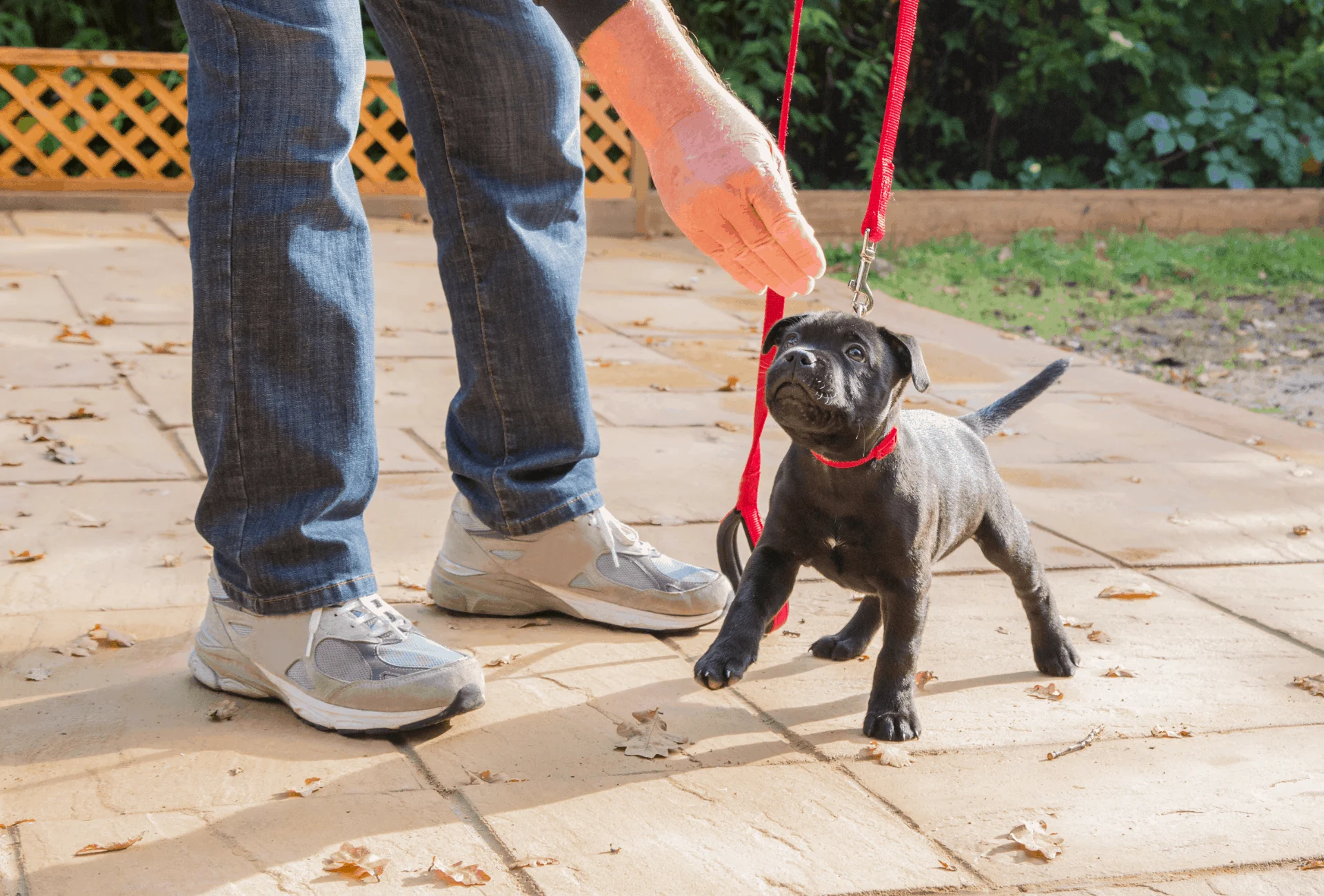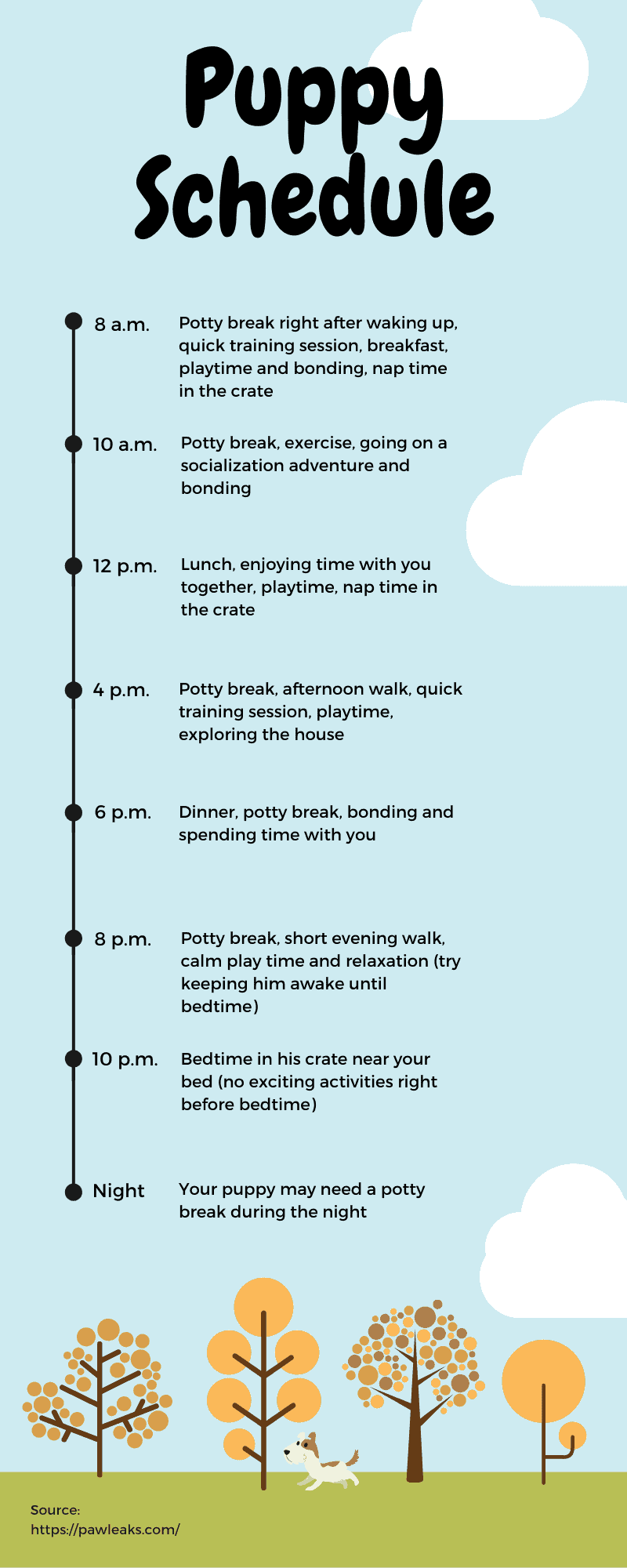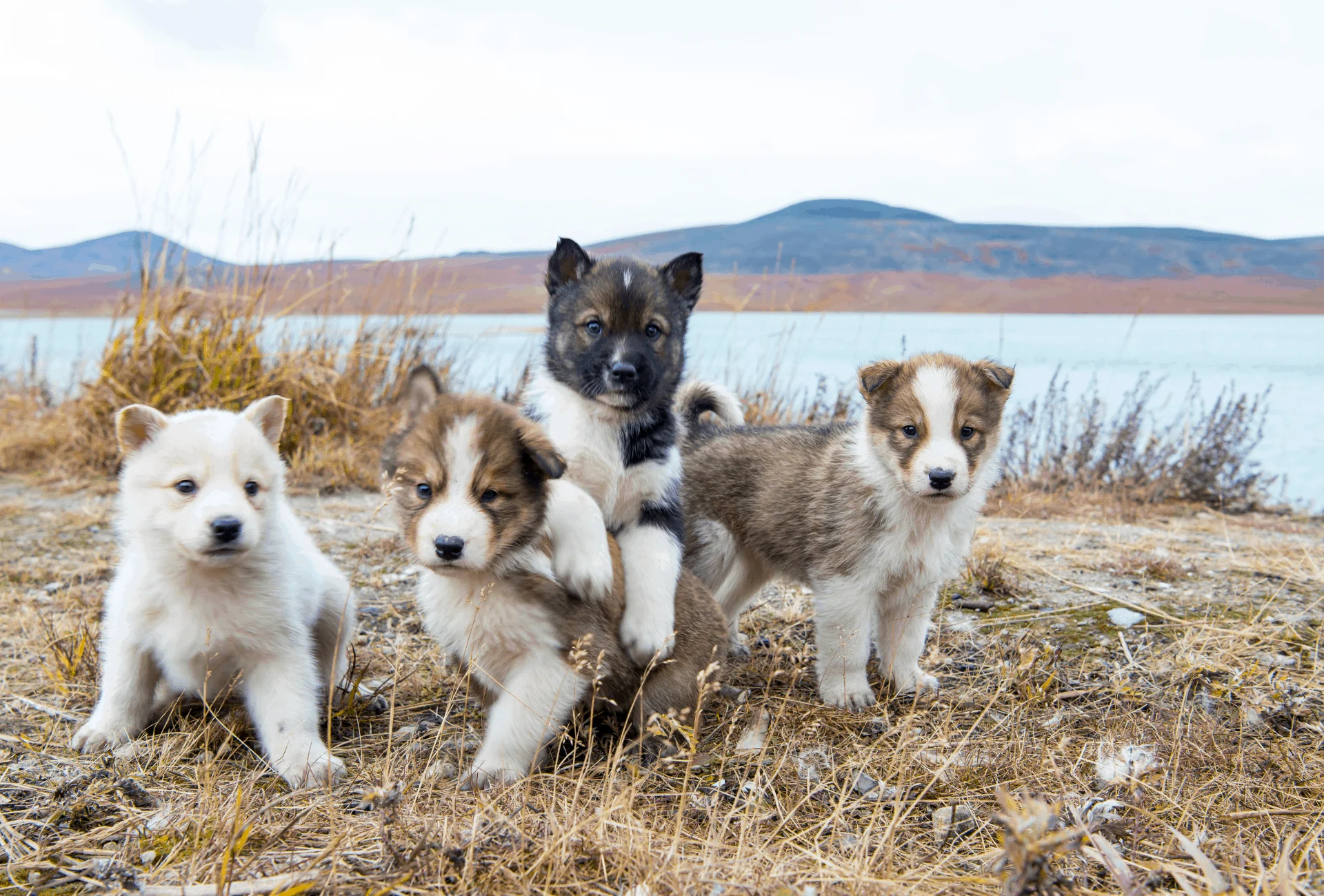Enrolling your puppy into obedience training classes is definitely helpful.
But let me tell you that it’s completely possible to train your puppy at home
Before I brought my puppy home, I made sure to acquire as much knowledge as I could to be prepared for any kind of situation.
Puppy training does not only include leash manners and obedience commands which could be taught in class, but also potty training and socialization on which you will have to work at home.
An important part of training your puppy at home is the bonding aspect and mutual understanding.
So, I have put together a comprehensive guide that includes plenty of links to further resources with my own experiences on training my puppy from home.

How Old Should a Puppy Be to Start Training
The general life learning process of a puppy starts immediately after birth.
When you bring your puppy home at 8 weeks of age, he will start learning from you immediately. This not only includes basic commands but also behavior rules and manners.
If you do not pay attention, you might be encouraging bad behavior from the start.
You can teach simple commands like “sit” or “down” right after your puppy has settled into his new home and environment.
Of course, use common sense and do not push or force your puppy to do anything he doesn’t want to. If he’s truly exhausted, dial the training back a bit and concentrate on bonding.
The attention span of puppies is very short and if you keep that in mind, you’re set up for success.
During this time, it is extremely important to let your dog explore his surroundings at his own pace. Curiosity and willingness to learn will be your primary training tools.
Recommended Reading: 7 Basic Obedience Commands (+ when to start training with your pup)
Puppy Training Basics
When hearing about puppy training basics, most people think about a nice “sit” and maybe a “stay”. But obedience commands are the least important training basics in the first few weeks.
What you should be focusing on first is setting “house rules” and getting into a routine.
Before you even bring home your puppy, sit down with your whole family and develop a set of rules that everyone needs to stick to.
These rules should include whether or not he is allowed on furniture or rooms that are permitted to enter and much more. Once they are agreed upon, there is no going back and no exceptions.
Dogs do not think like children that get to have exceptions from doing something they are usually not allowed to.
Rules need to be reinforced every single time because otherwise, it will only create confusion for the dog.
Your puppy should also get familiar with his daily routine from day one. Grab a pen and paper and line out a schedule. It could look something like this:

Define feeding times, potty breaks, training times, walks, playtime, and bedtime.
Dogs thrive on routines as they provide them with comfort and assurance to build up confidence in their own homes.
After you have set the basics, you can then start to teach him his name first. You can either put aside separate training sessions for that or simply incorporate it into obedience commands:
While I was teaching all these things, I already started to incorporate some manners that I would be expecting
For example, she was not allowed to simply rush out the door every time we would go for a walk.
I let her sit before she could eat and whenever I would remove the leash from her harness (which I only added once she was a few months old).
So I simply taught her that she has to be released whenever she wants to go somewhere or eat something.
This provides you with so much control and teaches your dog impulse control and asking for permission.
I can highly recommend incorporating the release command into your daily training.
Other puppy training basics include:
Puppy Training and Exercise Schedule
Puppies have a tiny attention span so training should be divided into several short sessions throughout the day. You could maybe do 5 minutes in the morning, at noon and in the evening.
A tip is to train with your puppy right before mealtimes because that is where he will be most responsive to treats (or you could just feed him his whole meal through training).
Besides these sessions, you are literally training your dog the whole day. Whenever he does something desirable, reinforce it with a reward.
If he is showing bad behavior then correct it and teach him what to do instead.
Physical exercise and mental stimulation are crucial to ensure a healthy and well-tempered dog. For a puppy, exercise mostly consists of exploring their environment.
There is a rule of thumb that you can safely exercise your puppy for 5 minutes twice a day for every month of age.
So if your puppy is 6 months old you can exercise him for 30 minutes two times a day.
Recommended Reading: How to Exercise Your Puppy
Surviving the First Night
Bringing your puppy home is a lot of fun until bedtime. I had a crate set up to which I introduced her several times throughout the day and let me tell you – I didn’t sleep.
Because Amalia was my first puppy, I was totally unprepared and couldn’t imagine how insane the first nights would be.
She would scream at the top of her lunges which is understandable because it was the first day away from her mother and littermates.
But she just wouldn’t get tired so I had to try a few things and you can check some tips in my crate training article.
Recommended Reading: How to Survive Your Puppy’s First Night at Home

Puppy Socialization
This is a huge subject and one of if not the most important training. The socialization period happens early between the age of 3 – 16 weeks old and nothing should be more prioritized than socialization in these few weeks.
The socialization period is a very vital phase in the development of a young puppy.
The goal here is to let the puppy positively experience as many situations as possible to boost his confidence and prepare him for the environment, including other dogs, people, places, and sounds.
This builds the foundation for a reliable and well-tempered puppy that won’t have to face any fear.
Experiencing these new stimuli together will form a strong bond and relationship. This is called the “human socialization period” that happens between 7-13 weeks of age.
I put a lot of time into socializing Amalia and I highly recommend enrolling in puppy play classes at least once a week because the amount of feedback your puppy gets from other dogs his own age and size is incredible.
It is crucial for your puppy’s healthy development to have the opportunity for supervised play.
Recommended Reading: How to Socialize Your Puppy
Separation Anxiety
Leaving your puppy alone for the first time can be daunting and without the right steps and preparation, you may be setting your dog up to develop anxiety.
I didn’t leave my puppy alone at all until she was fully house trained at around 14 weeks of age.
You shouldn’t leave an 8-10 weeks old puppy alone for more than 30 minutes to 1 hour at a time.
Slowly getting your puppy used to being alone is crucial even if it’s just for getting groceries.
You will save you and your puppy a lot of stress if you take the time to develop a healthy association
Recommended reading: Complete Guide to Dog Separation Anxiety
How Do You Bond with a Puppy?
Bonding with your puppy has many aspects. The most obvious one is spending a lot of quality time with your new companion but there is way more to it.
To understand your dog’s needs, research dog body language and clear communication with canines.
Communication is key to bonding with your dog. Playing and training together builds trust and positive memories.
If you want to read more about how to bond with your puppy and the signs of a strong or weak bond then click on the link below.
Recommended Reading: How to Bond with Your Dog
Puppy Training Problems
There will be many obstacles that you will have to overcome in order to train with your puppy.
Don’t get frustrated on the way, there is a solution to every problem. Always stay consistent with your rules and training and be patient and positive to achieve the best results.
You will probably have to deal with at least one of the common behavior problems.
Download my free guide to learn more about them but you can also read the other resources that I have put together for various situations:
- How I Calmed My Overexcited Dog on Walks & 4 Ways to Teach Your Puppy to Be Calm – a guide to all the hyper puppies that never seem to be tired
- 5 Types of Puppy Aggression and What to Do About It – aggression doesn’t have to be an unsolvable problem and early signs can be used to prevent further development
- How to Stop Puppy Howling and Barking – excessive vocalization is normal but doesn’t have to become a habit
Further resources include my favorite dog training Youtube channels.
I wish you all the best in training with your puppy at home. Feel free to ask any questions in the comments.
